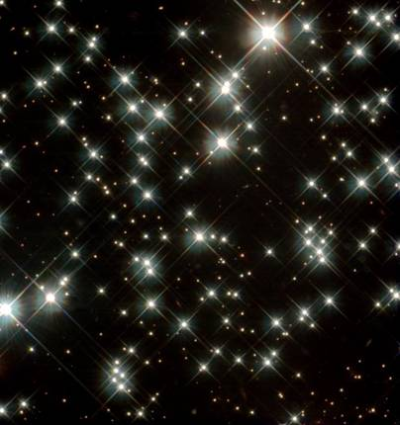06 September 2007

A Hubble Space Telescope Image
Credit: NASA and H. Richer (University of British Columbia)
A team of researchers, from the University of Cambridge and the California Institute of Technology (Caltech), applied a technique known as “Lucky Imaging” to obtain the sharpest pictures of stars and nebulae ever produced. The images, taken at a ground-based observatory, are of a resolution higher than even those of the Hubble Space Telescope (HST), and 50 times less expensive.
Images from ground-based telescopes are usually blurred by the turbulence of Earth’s atmosphere, the effect that also makes the stars appear to twinkle in the night sky.
The Cambridge/Caltech team, surpassed the quality of images taken from space by applying a high-speed camera to take numerous images of the same cosmic object at a rate of 20 frames per second. Due to fluctuations in the atmosphere, some of these images were more detailed than others. The team then applied computer software to select the best images, and these were combined to create pictures far sharper than the images acquired by space observatories.
“To produce images sharper than Hubble from the ground is a remarkable achievement by anyone’s standards," said Dr Craig Mackay (Institute of Astronomy at the University of Cambridge), leader of the research team.
“These are the sharpest images ever taken, either from the ground or from space, and yet we are essentially using ‘Blue Peter’ technology. Amateur Lucky Imaging is popular because the technique is cheap and effective. The low cost means that we could apply the process to telescopes all over the world.”
The Lucky Imaging technique was first mooted in the late 1970s and has enabled the discovery of many multiple star systems which are too closely spaced and too faint to detect with any conventional telescope.
The team's images of the globular star cluster M13, which is 25,000 light years away, are so finely resolved that they were able to record stars separated by only one light day (approximately 25 billion km). The images of the Cat’s Eye Nebula, located approximately 3,300 light years away, showed features that are only a few light hours (a few billion km) apart.
The work was carried out at Palomar Observatory, California, using the 5-m telescope. Typically, ground-based images are 10 times less detailed than the images acquired by Hubble. The Lucky Camera, however, enabled the astronomers to obtain images that are twice as sharp as Hubble's.
The technique could now be applied to improve much larger ground-based telescopes such as those at the 8.2-m telescopes of the European Southern Observatory (ESO) in Chile, or the 10-m telescopes of the William Keck Observatory, atop of Mauna Kea Volcano, Hawaii. These telescopes have larger mirrors and higher resolution than Hubble.
“The images space telescopes produce are of extremely high quality but are limited to the size of the telescope,” said Dr Mackay. “Our techniques can do very well when the telescope is bigger than Hubble and has intrinsically better resolution.”
Further Reading
University of Cambridge Press Release
http://www.ast.cam.ac.uk/~optics/Lucky_Web_Site/LI_Press_Releases_0807.htm
Lucky Imaging Website
http://www.ast.cam.ac.uk/~optics/Lucky_Web_Site/index.htm
The Hubble Space Telescope Official Websites
http://hubblesite.org/
www.spacetelescope.org/
Aymen Mohamed Ibrahem
Senior Astronomy Specialist